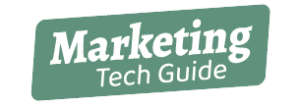A graphic designer is a professional who uses design elements like typography, motion graphics, or images to communicate messages visually. There are so many facets in graphic design one can specialize in; the opportunities are endless.
Different Types of Graphic Design Include:
- Marketing & Advertising – digital, print, or hybrid campaign
- Web Design – user interface on websites, games, or apps
- Publication – books, newspapers, magazines
- Packaging – designing packaging for products
- Motion – banners, animated texts, video games
- Illustration – original artwork
- Environmental – architectural plans
- Visual Identity/Branding – company logo, typography, business cards
In graphic design, terms such as symmetry and balance, flow, repetition, the golden ratio, the rule of thirds, typography, audience culture, and patterns will be used. The principles and elements of design, color theory, as well as graphic design tools, are all other important aspects you’ll learn.
Graphic design tools professionals use include Adobe Suite or Sketch, digital cameras, Pantone swatch book, Procreate, a high definition monitor, and Wacom Tools. Behance is a great place for those starting in graphic design or well into expanding their graphic design dictionary.
Graphic designers can either work for companies through agencies, as in-house staff, or on their own freelancing. There are pros and cons to each of these work options. Working with agencies, you are often very specialized in certain graphic design areas, and it is a good way to increase your portfolio if you don’t have tons of graphic design experience to start with. In-house graphic designers typically dabble in all parts of graphic design to meet a company’s brands’ needs. Freelance designers have the flexibility to create their own schedule and the responsibility to handle all business aspects of their freelance business.
Since graphic design involves a lot of close up screen time, we would highly recommend creating an ergonomic work set up for yourself to help with posture and vision. Blue light glasses are also great for helping ease eye tiredness sleep better, and decrease the impact of high screen exposure.
